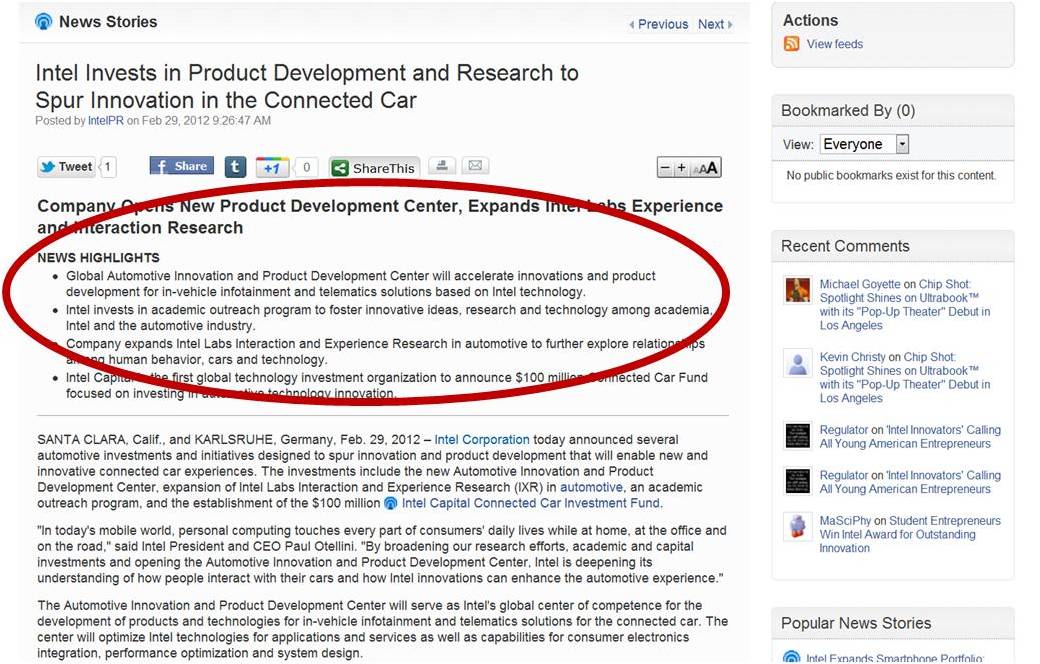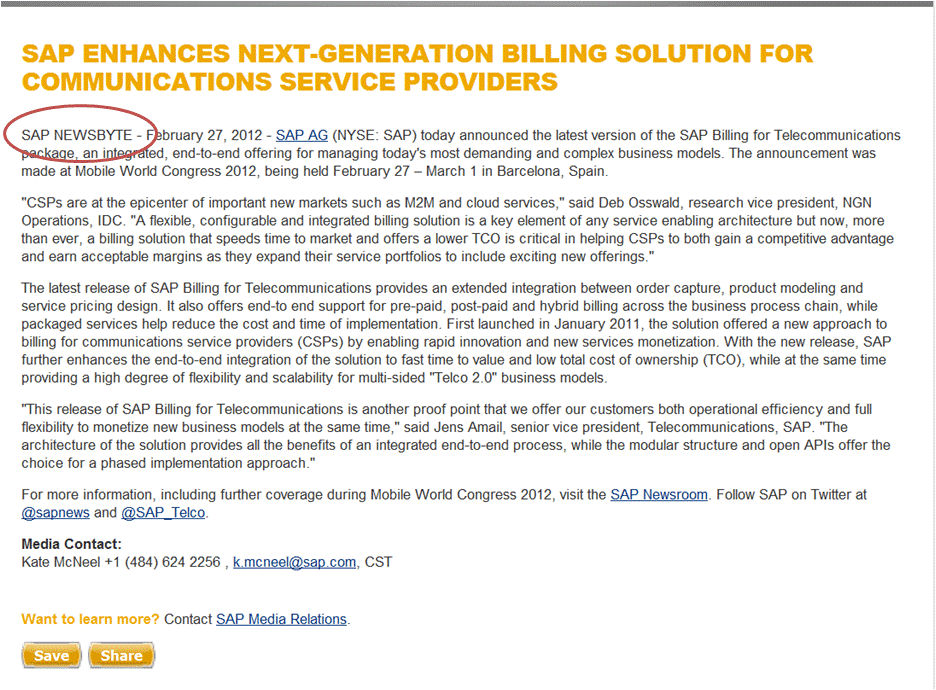Throw Out That Old-Style Press Release!

Remember those guidelines for writing press releases? Start with the most essential information in the lead paragraph: the who, what, when, where and how of why this is a newsworthy announcement. Then move on to information that substantiates the lead paragraph. In the days of print, this format made it easier for news editors to reduce word count by chopping text from the bottom up. Now that online distribution of news has taken over from print, there are changes to this hallowed practice. Intel maintains a traditional format press release format, but summarizes the announcement with a few key bullet points at the start of the announcement. This concise version of the release is a real help to editors who have to wade through hundreds of releases each day.

Intel also places social media links prominently, right under the headline. The “likes” and votes show editors how much interest there has been in this announcement, something else that could be helpful. Meanwhile, SAP has developed the “SAP Newsbyte”, a mini-release. The fact that a particular announcement is delivered as a newsbyte instead of a full press release means SAP has positioned its newsworthiness. Nothing ruins credibility with editors like sending out press releases that lack news appeal.

With the “newsbyte” approach SAP is keeping their audience updated, but also communicating that they know this is not a big news item. This helps a busy editor differentiate between major and minor announcements and who knows – if it’s a slow day, the newsbyte may get coverage after all. But take a look at this press release from Oracle. Instead of a traditional paragraph style press release, information is organized by category and written as bullet points:
- News Facts: the essentials of what is being announced and why it’s useful
- Benefits: solution goals and how the target audience will benefit
- Supporting Quotes: more supporting statements, but expressed as quotes from senior management
If your conclusion is that savvy PR departments have streamlined their writing to be more digital media-friendly, you certainly would be correct. There is, however, another dynamic behind this transition. Traditional industry publications are hurting, especially in the technology sector. Their value lies in providing news and analysis. In an online world where information is freely available, circulation and ad revenues have declined sharply. Where a magazine might have had several editors, each covering a different “beat”, they can no longer afford a large full-time staff to stay abreast of specific topics. Editors now cover a range of topics in an ever-more dynamic market, and most of them also have to blog. They don't have time to dig deep and become experts in every topic. The Oracle press release is an example of how a company has made it easier for editors and analysts to digest, understand, and repurpose news. Is it time for you to make some changes to the way you write your online press releases? You may not need to adopt the Oracle style, but here are a few tips to consider:
- Keep it brief, keep it factual. This is not an editorial
- Use bullet points as much as possible
- Avoid long explanations and background information; use links to other resources or definitions to keep down the overall length of the press release
- Remember to optimize for keywords whenever possible – but not at the expense of good writing
- Include social media tags and make it easy to share
- Keep your company boilerplate (the final paragraph that describes your company) short. Link to a longer company description
- Include links at the bottom to other resources: other related information, images of products or people, videos; always include the email address of your company spokesperson


